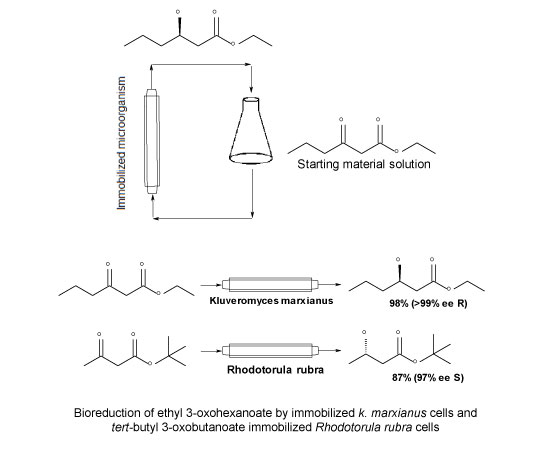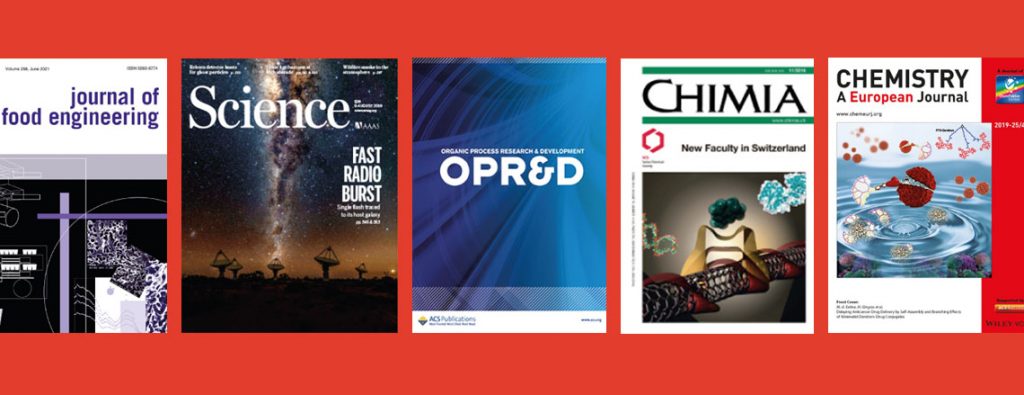Publication – Improving the toolbox of bioreductions by the use of continuous flow systems
Journal of the Brazilian Chemical Society 2015, 26, 550-554
- Raquel O. Lopes, Simon Grimm, Joyce B. Ribeiro, Ivana C. R. Leal, Leandro S. M. Miranda and Rodrigo O. M. A. de Souza
- Laboratório de Biocatálise e Síntese Orgânica, Instituto de Química and bFaculdade de Farmácia, Universidade Federal do Rio de Janeiro, 22941-909 Rio de Janeiro-RJ, Brazil
Using the Syrris Asia flow chemistry system researchers at the Universidade Federal do Rio de Janeiro have demonstrated an interesting alternative on the bioreduction of ?-ketoesters by immobilized microorganisms.
Applications that afford enantiomerically pure compounds are key transformations in chemical synthesis. The use of enzymes to facilitate these reactions have been shown to provide good alternatives to chemical catalysts and continuous flow bio-catalyzed reactions are being increasingly used by the chemistry community.
The group had previously shown the successful bioreduction of ?-ketoesters under batch conditions using K. marxianus and Rhodotorula rubra cells and transferred the conditions a continuous flow methodology. The immobilization of microorganisms by calcium alginate entrapment allows systems of this type to be more robust and readily reused and recycled, a big advantage over using whole cells which cannot be recycled.
Using this methodology the group obtained ?-hydroxyesters in excellent yields and high enantiomeric excess (>99%). By varying the ?-ketoester structure and immobilized microorganism the absolute stereochemistry could also be controlled.

Abstract: Packed bed reactors can be used as an interesting alternative on the bioreduction of ?-ketoesters mediated by immobilized microorganisms. Here in, we report our results on the bioreduction of ethyl 3-oxo-hexanoate by immobilized Kluyveromyces marxianus cells and tertbutyl 3-oxo-butanoate by immobilized Rhodotorula rubra cells under continuous flow conditions leading the desired ?-hydroxy esters corresponding in high yields and enantiomeric excess.
This paper uses the Asia system. Learn more about the product this chemistry was performed on.
For more information, contact us.

